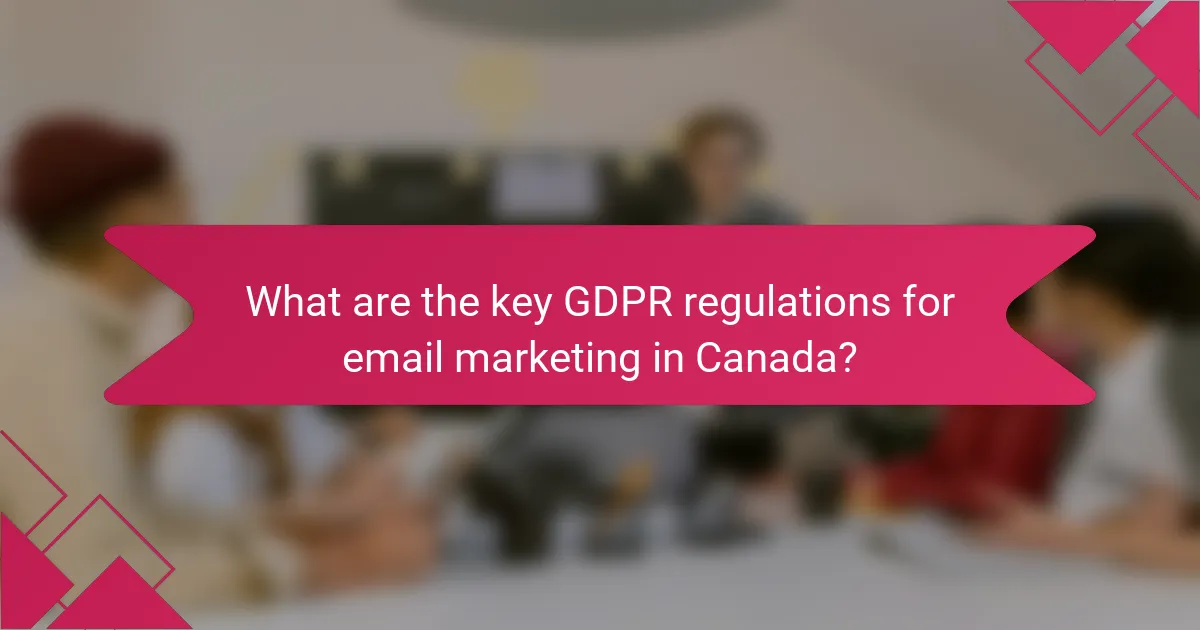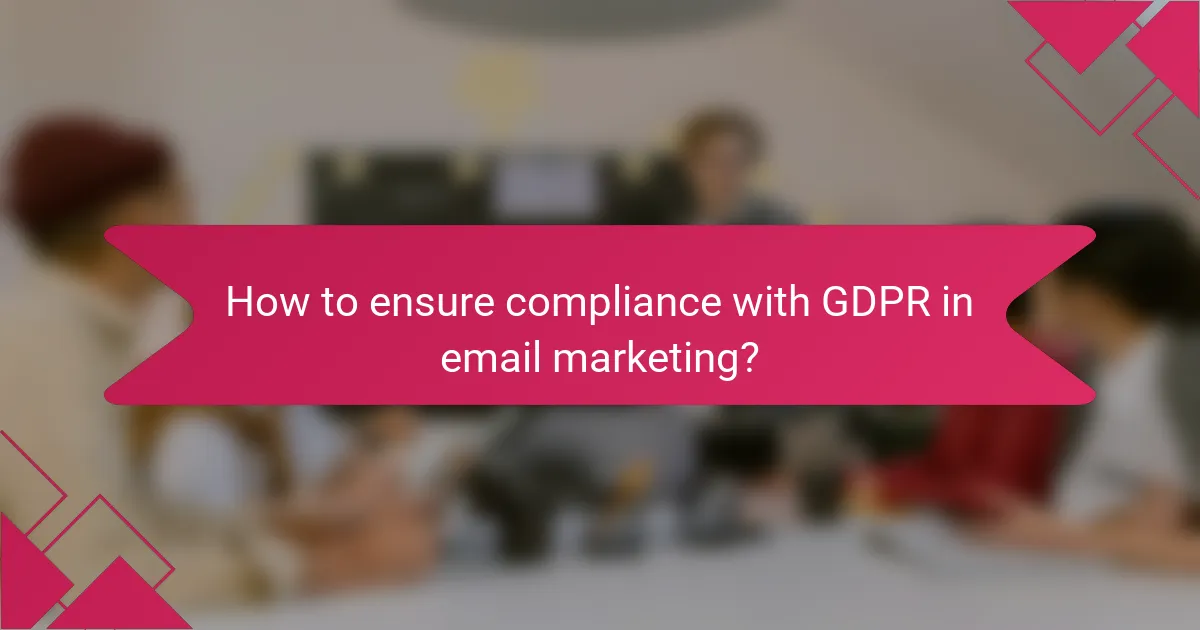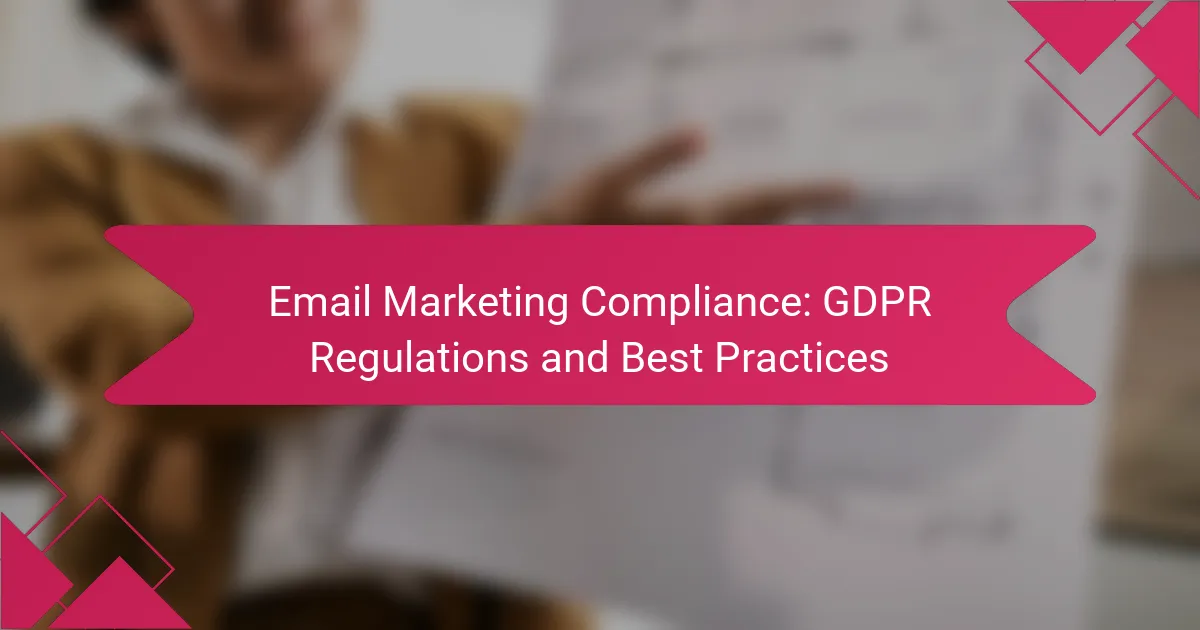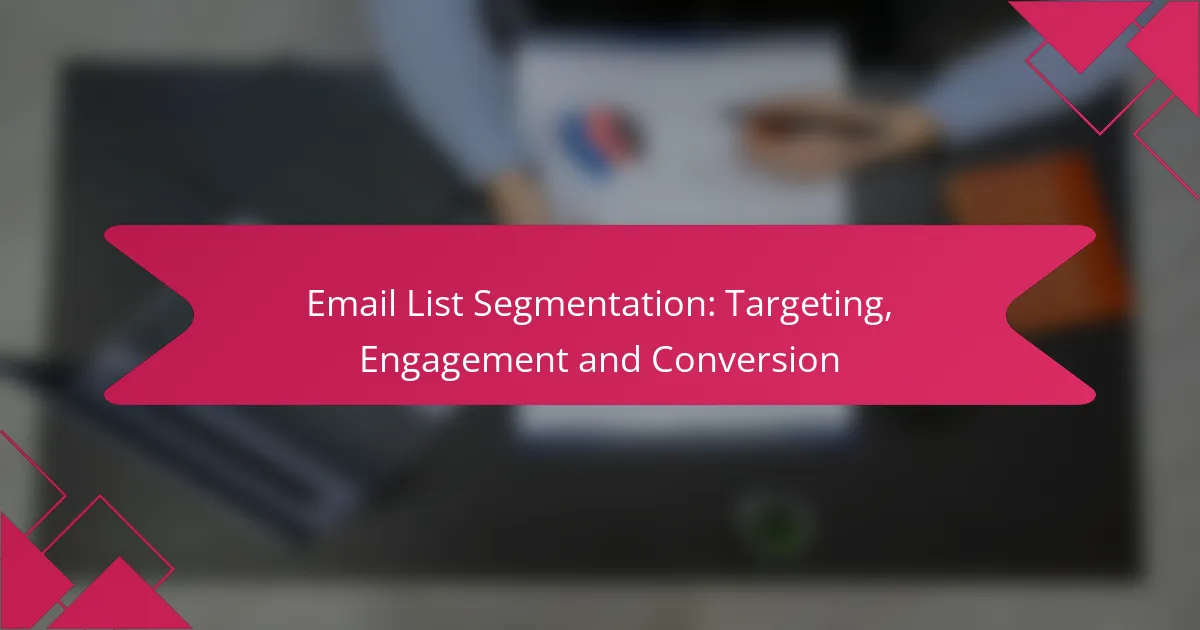Email marketing is significantly influenced by the General Data Protection Regulation (GDPR), which mandates strict guidelines for the collection and handling of personal data. To maintain compliance and foster customer trust, businesses must prioritize obtaining explicit consent, implement strong data protection measures, and ensure transparency through clear privacy notices.

What are the key GDPR regulations for email marketing in Canada?
The General Data Protection Regulation (GDPR) impacts email marketing in Canada by enforcing strict guidelines on how personal data is collected, processed, and stored. Organizations must ensure compliance with these regulations to avoid significant penalties and maintain customer trust.
Consent requirements
Under GDPR, obtaining explicit consent is crucial for email marketing. Businesses must ensure that individuals provide clear and affirmative consent before receiving marketing communications. This means using opt-in mechanisms rather than pre-checked boxes.
Consent must be specific, informed, and freely given, allowing individuals to understand what they are agreeing to. For example, a simple checkbox stating “I agree to receive marketing emails” is insufficient unless it is accompanied by detailed information about the types of emails and the frequency.
Data protection principles
GDPR outlines several key data protection principles that organizations must follow in email marketing. These include data minimization, which means only collecting data necessary for the intended purpose, and purpose limitation, ensuring data is only used for the reasons stated at the time of collection.
Additionally, organizations must ensure the accuracy of the data they hold and implement appropriate security measures to protect personal information. Regular audits and updates to data handling practices can help maintain compliance.
Rights of individuals
Individuals have several rights under GDPR that affect email marketing practices. These include the right to access their data, the right to rectify inaccuracies, and the right to request deletion of their personal information.
Organizations must provide clear instructions on how individuals can exercise these rights, such as through easy-to-find unsubscribe links in emails. Failing to honor these rights can lead to complaints and potential fines, making it essential to have robust processes in place.

How to ensure compliance with GDPR in email marketing?
To ensure compliance with GDPR in email marketing, businesses must prioritize obtaining explicit consent from recipients, implement robust data protection measures, and provide clear privacy notices. These steps help safeguard personal data and maintain trust with customers.
Obtain explicit consent
Obtaining explicit consent is a fundamental requirement under GDPR. This means that individuals must actively agree to receive marketing emails, rather than being automatically opted in. Use clear opt-in forms that specify what users are consenting to, such as the types of emails they will receive and how their data will be used.
Consider using double opt-in methods, where users confirm their subscription via a follow-up email. This not only verifies their consent but also helps maintain a clean email list, reducing the risk of sending unsolicited messages.
Implement data protection measures
Implementing data protection measures is crucial for GDPR compliance. Ensure that any personal data collected is stored securely and only accessible to authorized personnel. Use encryption and secure servers to protect sensitive information from unauthorized access.
Regularly review and update your data protection policies to align with best practices. Conduct audits to identify potential vulnerabilities and ensure that your email marketing platform complies with GDPR standards.
Provide clear privacy notices
Providing clear privacy notices is essential to inform users about how their data will be used. These notices should be easily accessible and written in straightforward language, detailing the types of data collected, the purpose of processing, and users’ rights regarding their information.
Include information on how users can withdraw their consent or request data deletion at any time. Transparency builds trust and helps ensure that your email marketing practices align with GDPR requirements.

What are the best practices for email marketing under GDPR?
To comply with GDPR, email marketing must prioritize user consent and data protection. Best practices include segmenting email lists, regularly updating consent records, and providing clear unsubscribe options.
Segment your email lists
Segmenting your email lists allows for targeted messaging, ensuring that recipients receive content relevant to their interests. This not only improves engagement rates but also helps in maintaining compliance by sending emails only to those who have opted in for specific types of communication.
Consider creating segments based on demographics, purchase history, or engagement levels. For example, you might have separate lists for new subscribers, active customers, and lapsed users, tailoring your messages accordingly.
Regularly update consent records
Maintaining accurate consent records is crucial for GDPR compliance. Regularly review and update these records to ensure that you have the necessary permissions to contact your subscribers. This includes documenting when and how consent was obtained.
Implement a system to track consent changes, such as a database that logs user preferences. This practice not only helps in compliance but also builds trust with your audience, showing that you respect their choices.
Include unsubscribe options
Every email you send must include a clear and easy way for recipients to unsubscribe. This is a fundamental requirement under GDPR, ensuring that users can withdraw their consent at any time without hassle.
Make the unsubscribe link prominent and straightforward, ideally placed at the bottom of your emails. Consider adding a brief survey to understand why users are unsubscribing, which can provide valuable insights for improving your email strategy.

How to handle data breaches in email marketing?
Handling data breaches in email marketing requires prompt action to mitigate risks and comply with regulations. Key steps include notifying affected individuals and reporting the breach to relevant authorities.
Notify affected individuals
Informing individuals whose data has been compromised is crucial. You should communicate the nature of the breach, what data was involved, and the potential risks they may face. This notification should occur without undue delay, typically within 72 hours of discovering the breach.
When notifying individuals, provide clear instructions on how they can protect themselves, such as changing passwords or monitoring their accounts. Transparency builds trust and helps mitigate potential damage to your brand’s reputation.
Report to authorities
In many jurisdictions, including those governed by GDPR, reporting a data breach to authorities is mandatory. This report should include details about the breach, the data affected, and the measures taken to address the situation. Generally, this should be done within 72 hours of becoming aware of the breach.
Failure to report a breach can result in significant fines and penalties. Ensure you have a clear protocol in place for reporting, including who is responsible for the task and what information needs to be gathered beforehand.

What tools can help with GDPR compliance in email marketing?
Several tools can assist businesses in ensuring GDPR compliance in their email marketing efforts. These tools typically offer features that help manage consent, data protection, and user rights, making it easier to adhere to regulations.
Mailchimp compliance features
Mailchimp provides various compliance features designed to help users meet GDPR requirements. It includes tools for managing subscriber consent, allowing users to create sign-up forms that clearly state how their data will be used.
Additionally, Mailchimp offers an audit log that tracks subscriber activity, which can be useful for demonstrating compliance. Users can also easily manage and delete subscriber data upon request, aligning with GDPR’s right to erasure.
HubSpot GDPR tools
HubSpot offers a suite of GDPR tools that facilitate compliance in email marketing. Its platform includes features for obtaining explicit consent from subscribers, enabling businesses to create customized consent forms that meet regulatory standards.
Moreover, HubSpot provides a data privacy dashboard that allows users to manage and track consent records efficiently. This feature helps ensure that businesses can respond to data access requests and maintain transparency with their subscribers.

What are the consequences of non-compliance with GDPR?
Non-compliance with GDPR can lead to significant consequences for businesses, including hefty fines and reputational damage. Organizations that fail to adhere to these regulations risk losing customer trust and facing legal actions.
Fines and penalties
The GDPR imposes strict fines for non-compliance, which can reach up to €20 million or 4% of annual global turnover, whichever is higher. This tiered penalty structure means that the severity of the violation determines the fine amount, with more serious breaches attracting larger penalties.
For example, failing to obtain proper consent for email marketing can result in substantial fines. Companies should regularly audit their data collection practices to ensure they are compliant and minimize the risk of incurring penalties.
To avoid fines, businesses should implement robust compliance programs, including staff training on GDPR requirements and regular reviews of their email marketing practices. Keeping detailed records of consent and data processing activities can also help demonstrate compliance if questioned by regulatory authorities.









